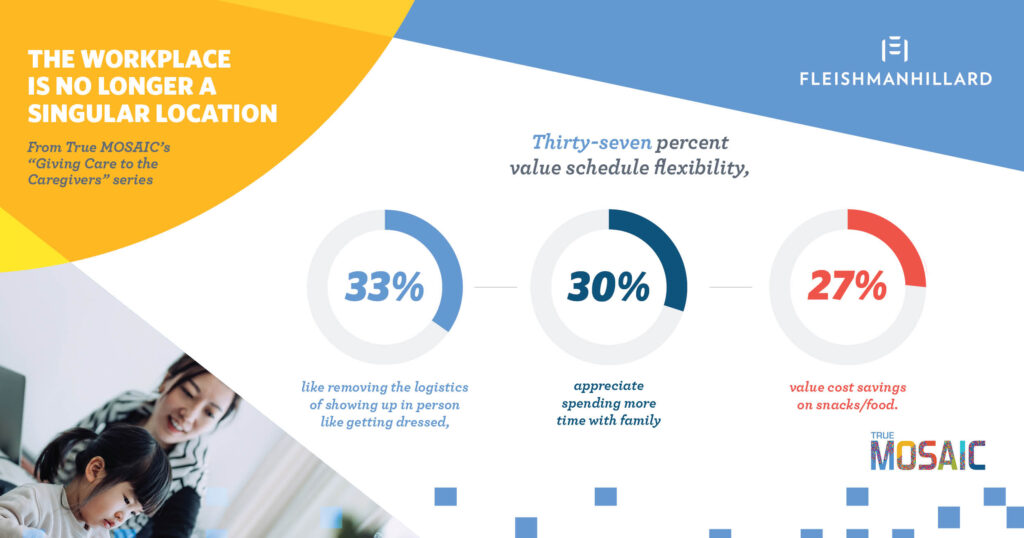The Workplace Is No Longer a Singular Location
From the “Giving Care to the Caregivers” series
The workplace as a singular location is no longer, especially for caregivers as they have unique physical and emotional needs. As we continue to live with the pandemic, the concept of physically coming into a workplace just to do the work only to spend significant amounts of time commuting back home seems outdated and inefficient to many people. For some, work can be done anywhere, as the pandemic has illuminated. Now, as we inch toward an endemic stage, a virtual and hybrid workplace presents an opportunity for employers to innovate and connect, evolving beyond a traditional physical location with mandatory physical attendance for the singular purpose of being present.
One-Size-Fits-All Is No Longer
One of the most important things managers should keep in mind is that the workforce is not a monolith. Not all people within the same demographics feel the same way about the best ways to work, and that underscores the need for flexibility.
For example, working from home has had mixed effects on work-life balance. Around half of participants report spending more time working each week, but at the same time, freedom from commuting has allowed for more time to spend on things other than work (approximately 80% of participants agree). This is especially true among the caregiver population, of whom 9-in-10 agree.

Weighing the Pros and Cons of Working from Home
- The advantages of working from home were more strongly recognized than the disadvantages, across all respondents.
- Forty-eight percent of employees value benefits related to not commuting, with 46% valuing saving money on commuting costs specifically.
- Thirty-seven percent value schedule flexibility, 33% like removing the logistics of showing up in person, like getting dressed, 30% appreciate spending more time with family and 27% value cost savings on snacks/food.

The millions of people who make up workforces around the world all have different needs. This is especially true for caregivers. Flexibility and open mindedness about the way we work may be some of the gifts that have come from these rough pandemic years. Let’s give these ideas a try and see what we can learn about new, improved and more effective ways to work.
###
The research for the True MOSAIC “Giving Care to the Caregivers” thought leadership series was conducted by FleishmanHillard’s TRUE Global Intelligence, the agency’s in-house research practice. Research for the report is based on a total of 2,076 respondents including a U.S. nationally representative sample (based on gender, age, region) of n=1,056, and an oversample of respondents who self-identified as Disabled (n=278), AAPI (n=250), Hispanic (n=260), Black (n=280), Caregivers (n=272), and Parents (n=274). The survey was conducted between March 15-29, 2022.
This blog post is part of a series focused on caregivers and our new ways of working, exploring what leaders should consider in their return to office plans. The next blog will tackle the role of the DE&I communications practitioner in return-to-work plans.
